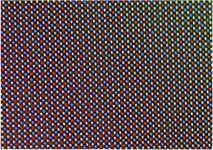INFORMATION:
Drs Deveson and Mercer were partially supported by Australia's National Health and Medical Research Council, the Medical Research Future Fund, Cancer Institute NSW and The Kinghorn Foundation.
Cancer DNA blood tests validated by international research team
2021-04-12
(Press-News.org) An international team today reports the findings of an independent assessment of five commercially-available assays for tumour DNA sequencing - a fast, cheap and less invasive method to diagnose and monitor cancer.
The researchers revealed that all assays could reliably detect so-called circulating tumour DNA (ctDNA) when it made up 0.5% of the total DNA in blood, a level of sensitivity that allows detection, genetic analysis and monitoring of late-stage and metastatic tumours.
Published in the journal Nature Biotechnology, the study is a major milestone for the use of ctDNA assays as cancer diagnostics, outlining best-practice guidelines and uncovering key areas of future development.
The research was led by the Garvan Institute of Medical Research, the FDA National Center for Toxicological Research and the University of Arkansas for Medical Sciences. It forms part of the FDA-led Sequencing Quality Control Phase 2 project, which aims to develop standard protocols and quality control metrics for the use of next-generation sequencing in precision medicine, to make it a reality for patients.
"In order for ctDNA assays to be of benefit to patients in the clinic, they need to accurately and consistently detect cancer mutations across different labs and samples. Our study is the most comprehensive evaluation of analytical performance among ctDNA assays to date and represents a significant step forward in the field," says first author Dr Ira Deveson from the Garvan Institute.
Next-generation sequencing to monitor cancer DNA
When cancer cells develop, they accumulate mutations in their DNA, fragments of which enter the bloodstream when cancer cells break down. Thanks to assays employing next-generation sequencing, these ctDNA fragments can now be detected in a patient's blood samples, which could be used to identify and monitor cancer as an alternative to more invasive tissue biopsies.
However, while ctDNA assays are already being adopted in precision oncology clinical trials, researchers and clinicians still lack a thorough understanding of how accurate current assays are, and which aspects of the technology still need to be improved. This knowledge helps define what applications ctDNA sequencing is suitable for and is needed before ctDNA sequencing can be implemented widely in clinical practice.
In their study, researchers from 12 participating laboratories in Europe, Asia and the United States evaluated the performance of current industry-leading ctDNA assays, from companies Roche Sequencing Solutions, Illumina, Integrated DNA Technologies and Burning Rock Dx and Thermo Fisher Scientific.
They tested the assays using synthetic experiments and mock-ctDNA reference samples. Their analysis revealed that all laboratories detected ctDNA mutations above 0.5% relative frequency (consistent with late-stage and metastatic tumours) with high sensitivity, precision and reproducibility using all participating assays. However, the assays detected lower levels of ctDNA (consistent with early-stage cancer or early signs of disease relapse) unreliably and inconsistently between different tests.
In their published paper, the researchers outline priorities for the future development of ctDNA assays, which they say will help advance the technology for clinical applications in monitoring tumour progression, response to therapy and cancer relapse.
"Our findings indicate that the participating ctDNA assays may be suitable for molecular stratification and profiling tumour evolution in advanced cancer patients. This should help clear a path for more advanced clinical trials of ctDNA assays," says Associate Professor Donald Johann Jr., M.D., from the University of Arkansas for Medical Sciences College of Medicine departments of Biomedical Informatics and Internal Medicine.
"Understanding the current assays' detection limits was a crucial step towards a future where blood tests can be routinely used as a cancer screening tool. This critical study is a thorough analytical evaluation of ctDNA assays, which defined diagnostic limits, assessed reproducibility and identified key experimental variables that impact performance, and which has been called for by government, regulatory and clinical organisations," says Dr Joshua Xu from the U.S. FDA National Center for Toxicological Research.
"Our independent performance analysis is a crucial mechanism to drive advances in next-generation sequencing approaches for their use in cancer detection and management. We expect it will help improve the tests' sensitivity and reliability for diagnosing tumours at early stages," says co-senior author Associate Professor Tim Mercer from the Garvan Institute and the Australian Institute for Bioengineering and Nanotechnology at the University of Queensland.
ELSE PRESS RELEASES FROM THIS DATE:
Unusual fossil reveals last meal of prehistoric pollinator
2021-04-12
An amber fossil of a Cretaceous beetle has shed some light on the diet of one of the earliest pollinators of flowering plants.
The animal's remains were unearthed by researchers at the University of Bristol and the Nanjing Institute of Geology and Palaeontology of the Chinese Academy of Sciences (NIGPAS) who were able to study its fossil faecal matter, which was composed solely of pollen.
Besides being a visitor of angiosperms - flowering plants - researchers now have conclusive evidence that the new fossil named Pelretes vivificus also fed on their pollen. Details of this discovery have been published ...
Drug testing approach uncovers effective combination for treating small cell lung cancer
2021-04-12
Researchers from the National Institutes of Health have identified and tested a drug combination that exploits a weakness in small cell lung cancer (SCLC), an aggressive, dangerous cancer. The scientists targeted a vulnerability in how the cancer cells reproduce, increasing already high levels of replication stress ¬¬-- a hallmark of out-of-control cell growth in many cancers that can damage DNA and force cancer cells to constantly work to repair themselves. In a small clinical trial, the drug duo shrank the tumors of SCLC patients. The team reported its findings April 12 in Cancer Cell.
While many patients with small cell lung cancer initially respond to chemotherapy, they lack an effective follow-up treatment. These patients usually live a matter of weeks after their ...
New test better detects reservoir of virus in HIV patients
2021-04-12
A new test that measures the quantity and quality of inactive HIV viruses in the genes of people living with HIV may eventually give researchers a better idea of what drugs work best at curing the disease.
Currently no cure exists for HIV and AIDS, but antiretroviral therapy drugs, or ARTs, effectively suppress the virus to undetectable levels.
Published today in Cell Reports Medicine, the study discusses how a new test, developed jointly by scientists at the University of Washington School of Medicine and Fred Hutchinson Cancer Research Center, will ...
Scientists uncover the last meal of a cretaceous pollinator
2021-04-12
While pollinators such as bees and butterflies provide crucial ecosystem services today, little is known about the origin of the intimate association between flowering plants and insects.
Now, a new amber fossil unearthed by researchers from the Nanjing Institute of Geology and Palaeontology of the Chinese Academy of Sciences (NIGPAS) and the University of Bristol sheds light on some of the earliest pollinators of flowering plants.
The study was published in Nature Plants on April 12.
Two hundred million years ago the world was as green as today, overgrown with dense vegetation, but it was not as colorful. Flowering plants (angiosperms) that make up over 80% of all plant species today, only began to diversify in the Cretaceous, about 125 million years ago.
Some scientists have attributed ...
New Jurassic flying reptile reveals the oldest opposed thumb
2021-04-12
A new 160-million-year-old arboreal pterosaur species, dubbed 'Monkeydactyl', has the oldest true opposed thumb - a novel structure previously not known in pterosaurs.
An international team of researchers from China, Brazil, UK, Denmark and Japan have described a new Jurassic pterosaur Kunpengopterus antipollicatus, which was discovered in the Tiaojishan Formation of Liaoning, China.
It is a small-bodied darwinopteran pterosaur, with an estimated wingspan of 85 cm. Most importantly, the specimen was preserved with an opposed pollex ("thumb") on both hands.
The species name 'antipollicatus' ...
SMART discovers the science behind varying performance of different colored LEDs
2021-04-12
Singapore, 12 April 2021 - Researchers from the Low Energy Electronic Systems (LEES) Interdisciplinary Research Group (IRG) at Singapore-MIT Alliance for Research and Technology (SMART), MIT's research enterprise in Singapore, together with Massachusetts Institute of Technology (MIT) and National University of Singapore (NUS) have found a method to quantify the distribution of compositional fluctuations in the indium gallium nitride (InGaN) quantum wells (QWs) at different indium concentrations.
InGaN light emitting diodes (LEDs) have revolutionised the field ...
Global warming could lead to the melting of more than a third of Antarctic ice shelves
2021-04-12
A new study conducted jointly by the Univerisyt of Liege (Belgium) and the University of Reading (England) suggests that 34% of the Antarctic ice shelves could disappear by the end of the century if the planet warms up by 4°C compared with pre-industrial temperatures. This melting could lead to a significant rise in sea levels. This study is published in the journal Geophysical Research Letters.
Since the early 2000s, scientists have observed that the Antarctic ice sheet is losing mass at a rate that is accelerating. The ice sheet is a very thick expanse of ice that can cover an entire continent. There are only two ice sheets on Earth: the Greenland ice sheet, which is limited to the ...
Study showing how the brain retrieves facts and may help people with memory problems
2021-04-12
A shared set of systems in the brain may play an important role in controlling the retrieval of facts and personal memories utilised in everyday life, new research shows.
Scientists from the University of York say their findings may have relevance to memory disorders, including dementia, where problems remembering relevant information can impact on the daily life of patients.
Researchers say the findings may also have important implications for the development of a new generation of artificial intelligence systems, which use long-term memory in solving computational problems.
The brain's long-term memory stores are categorised into two: factual memory ...
Is a calorie a calorie? Not always, when it comes to almonds
2021-04-12
Researchers at the University of Toronto have found that a calorie labelled is not the same as a calorie digested and absorbed, when the food source is almonds.
The findings should help alleviate concerns that almonds contribute to weight gain, which persist despite the widely recognized benefits of nuts as a plant-based source of protein, vitamins and minerals.
"Nuts have generally been thought of as healthy the last two decades, but the messaging around nuts has often come with a disclaimer that they are high in fat and energy," said John Sievenpiper, ...
World's first study to evaluate greenhouse gas emissions from Chinese inland waters
2021-04-12
Inland waters are an important component of the global carbon cycle and function as active reactors, transporting and transforming large quantities of naturally- and anthropogenically-derived carbon. Previous studies suggest that inland waters are major sources for greenhouse gas emissions to the atmosphere, yet these emissions are poorly constrained (Note 1).
As a primary greenhouse gas that drives global climate change, carbon dioxide (CO2) emissions from inland waters play a key role in assessing global carbon cycle. While most efforts over the last decade have focused on refining the emission flux estimates at the regional and global scales, scientists do not fully understand the responsiveness of regional ...




